The diversity of food sources around the world reflects the variety of available flora and fauna and illustrates the spectrum of cultural practices and dietary preferences that exist. Our planet’s rich assortment of edible resources is not embraced by all, as considerations of palatability and propriety are deeply rooted in the fabric of cultural and individual identities. These considerations are shaped by a complex blend of environmental, social, and personal factors, which makes the subject of food choice nuanced and sometimes contentious. Such diversity not only underscores the multiplicity of human cultures but also emphasizes the potential in fostering a more interconnected and accepting global society. Understanding the factors that cause certain foods to be off-putting is key to this endeavor. Here, the variety of wines from Jerez in Andalusia, Spain, stands out as an example of how a regional specialty can appeal to an array of palates and, perhaps, serve as a culinary ambassador, offering an accessible way to appreciate the unfamiliar and weave together a tapestry of tastes across different cultures.
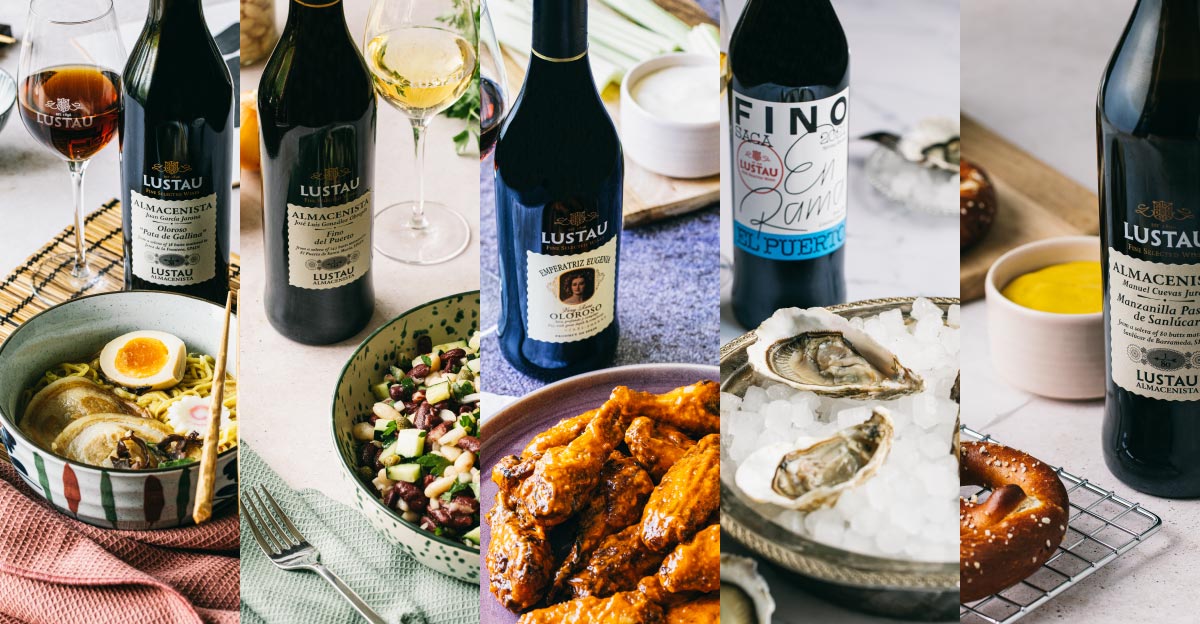
At Lustau, we’re constantly exploring new ways to showcase the exceptional compatibility of sherry wines with various cuisines. Some of the food choices below might strike some as unusual (or not at all!), yet they offer a delightful surprise to the palate when paired with a carefully selected glass of wine. Dive into our collection of success stories—each celebrates the joy of culinary discovery and may just tempt your taste buds in the most astonishing ways!
WHAT MAKES SHERRY GREAT FOR PAIRINGS
We hope you enjoy the six unique narratives below, each featuring a distinct sherry wine, together representing the wide spectrum of exquisite profiles emanating from the region. Ranging from the crisp, saline nuances of manzanilla and fino to the refined complexity of amontillado, the rich intensity of palo cortado and oloroso, and culminating in the sumptuous sweetness of pedro ximénez, this collection showcases the remarkable versatility of Jerez region. We are delighted to introduce our ‘Sherry Experience’ special six-pack, now available for those who wish to delve into this extraordinary variety.
Embark on a journey of culinary discovery with our expertly curated selection, each bottle poised to complement an array of dishes. From the briny freshness of oysters to the indulgent richness of desserts, our sherry wines elevate dining to an art form. Each variety is a testament to the adaptability and enduring appeal of sherry, making them suitable for any occasion, whether a casual gathering or a formal feast, at any time of day, and in any company. Get ready to enhance your meals with a symphony of flavors by securing your six-pack today.
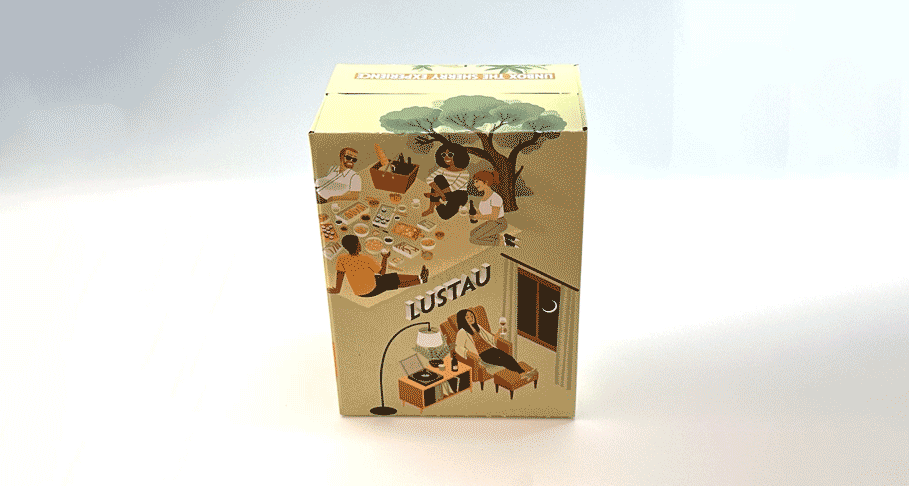
Callos a la Madrileña & Palo Cortado: Jordi Paronella, esteemed wine connoisseur, has distinguished himself as a true sherry master, first in his native Catalonia and over the past decade, in the United States. His dedication to promoting sherry wines has made a mark across all his affiliated restaurants. Recognized as one of the world’s preeminent Spanish food and wine authorities, in 2021, Paronella, alongside his chef partner Nicolás López of Mercado Little Spain in NYC, clinched the Best Dessert Award at Copa Jerez with their Payoyo Cheesecake paired with moscatel sherry. A regular in Madrid, Paronella delights in exploring traditional Spanish flavors, which he then reintroduces with a flourish to American diners at José Andrés’ establishments nationwide.
“Callos a la Madrileña” is a classic dish from the Madrid region of Spain, deeply rooted in the city’s culinary tradition. It’s a hearty stew known for its robust flavor and is particularly popular during the colder months, serving as a warming, comforting meal. The dish’s main ingredient is tripe, usually from beef, which is thoroughly cleaned and then slowly simmered until tender. The cooking process is a long one, typically involving several hours to ensure that the tripe becomes soft and the flavors meld together. The tripe is cooked with a variety of other ingredients that may include chorizo (a type of Spanish sausage), morcilla (Spanish blood sausage), ham hocks, and sometimes other cuts of meat. Flavorings and spices are a crucial aspect of the preparation. Common additions include sweet and spicy paprika (pimentón), garlic, onions, and a blend of other traditional Spanish herbs and spices. Some recipes also call for a robust red wine to add depth to the stew.
Tomato sauce is often used as a base, contributing to the dish’s rich, red color and tangy flavor. The stew is typically thickened with the gelatinous textures from the tripe and sometimes with the addition of chickpeas. It should be noted that tripe is a type of offal, which refers to the internal organs and entrails of a butchered animal. Many diners have a psychological aversion to eating these parts of an animal, often due to cultural preferences or personal squeamishness. Aside from its unusual appearance with its honeycomb pattern and pale color, tripe has a unique texture that is quite different from more commonly eaten cuts of meat. It can be rubbery or chewy if not prepared correctly, and even when cooked well, its distinctive texture is not to everyone’s liking.
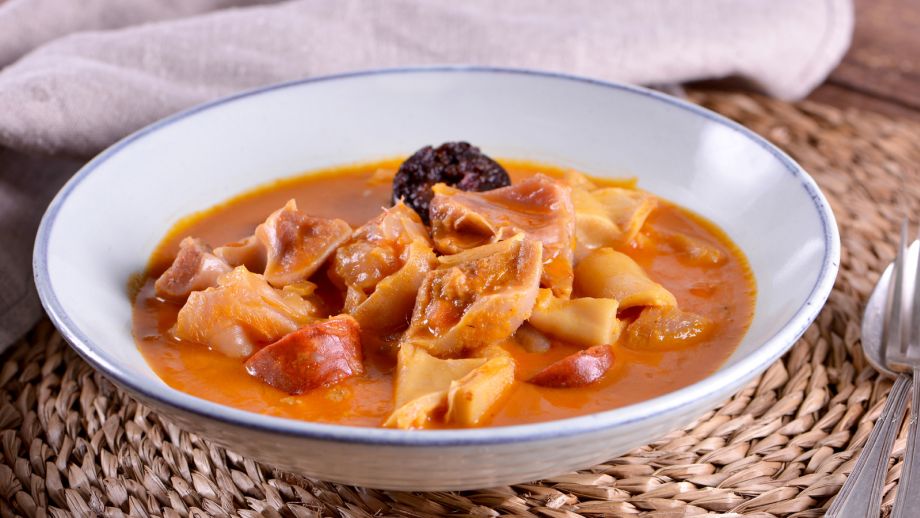
Paronellas’ wine selection to enjoy this culinary staple is Lustau Palo Cortado Península. According to his own words:
“The gelatinous texture of Callos a la Madrileña, a hallmark of the dish, requires a wine with enough body and structure to complement it without being overshadowed. palo cortado has this in abundance. Flavor-wise, the dish’s powerful aromatic presence, arising from the pimentón and chorizo, is met by the palo cortado’s complex notes. The smoky, slightly sweet spice of the pimentón and the intense, savory depth of the chorizo are echoed in the wine’s nuanced profile, which often includes hints of citrus, dried fruits, and a subtle nuttiness. Moreover, the acidity and alcohol content in palo cortado helps cut through the richness of the dish. This interplay enhances the flavors of both the dish and the wine, creating a more complete sensory experience. Finally, the aging process of palo cortado, which often involves lengthy oxidative aging, imparts a complexity that stands up to the intensity of the stew. The wine’s maturity means it can hold its own against the long-simmered flavors of the dish, offering a layered tasting experience that evolves with each mouthful.”
Peanut Butter and Jelly Burger & Oloroso: The peanut butter and jelly (PB&J) burger is a unique and intriguing culinary creation that some adventurous eateries, particularly in Florida, have added to their menus in recent times. It is a part of a larger trend in the culinary world where chefs mix traditional and unconventional ingredients to create new sensory experiences. This burger combines the classic elements of a traditional American hamburger with the unexpected twist of peanut butter and jelly. The result is a surprising mix of savory and sweet flavors that has gained a niche following. The PB&J burger usually consists of a beef patty that’s topped with a generous spread of peanut butter and a dollop of fruit jelly or jam. It’s often served on a standard burger bun, and some variations might include additional toppings such as bacon or sriracha sauce to enhance the flavor complexity. The peanut butter provides a creamy, nutty taste and texture, while the jelly adds a sweet and sometimes slightly tart contrast, making the burger an interesting play on flavors.
While PB&J burgers may be seen as gross by some, others may appreciate the adventurous combination and the balance of sweet and savory flavors. It’s a clear example of how personal taste, cultural expectations, and sensory experiences play a critical role in how food is perceived and enjoyed.
Here are a few reasons why many people may find this combination rather disgraceful:
1. Culinary Tradition: Many cultures have established norms for which flavors and foods can be mixed. PB&J on a burger breaks these norms, which can make the combination seem disrespectful to traditional culinary practices.
2. Sensory Expectation: When people think of burgers, they anticipate certain flavors and experiences. Introducing the sweet and creamy profile of PB&J disrupts these expectations, leading to a negative response from those who value conventional burger tastes.
3. Psychological Barrier: There’s often a psychological barrier when familiar foods are presented in unconventional ways. Even if the flavors might pair well, the idea of mixing childhood sandwich spreads with a grilled piece of meat can seem inappropriate.
4. Dietary and Health Considerations: Given that burgers are often viewed as indulgent foods and peanut butter and jelly are high in calories and sugar, combining them can be seen as an excessive and unhealthy choice.
Now, some people find PB&J burgers to be a delicious combination for several reasons:
1. Novelty and Adventure: Many food enthusiasts are drawn to novel combinations that challenge traditional culinary boundaries. Trying a PB&J burger can be an exciting adventure for the palate, appealing to those who enjoy exploring new and innovative food experiences.
2. Comfort Food Mash-up: Both burgers and PB&J sandwiches are considered comfort foods by many. Combining them can evoke a sense of nostalgia while offering something new and indulgent, tapping into fond memories associated with each food.
3. Flavor Complexity: Peanut butter is known for its rich, nutty flavor which can add depth to the taste of a burger. When paired with the sweet and tart flavors of jelly, it creates a multi-layered flavor experience that can be more interesting than traditional burger toppings.
4. The Umami Factor: Burgers naturally have umami, the so-called fifth taste that is rich and savory. Peanut butter can also contribute to the umami sensation, especially when paired with certain types of bread and meats, making for a more satisfying meal.

If you feel ready to give this juxtaposition a try, we suggest savoring it with a glass of dry Lustau Oloroso Don Nuño. Venturing into the culinary pairing of a PB&J burger with oloroso sherry presents a delightful interplay of flavors and textures, creating an unforgettable dining experience. The nutty notes of this wine pair beautifully with the richness of peanut butter and seared meat, while the oloroso’s inherent dryness offers great synergy with the salty elements in the dish. Simultaneously, the sherry reveals a subtle sweetness that aligns with the jelly’s sugary profile, achieving a balance without dominating the taste. The velvety oloroso enhances the burger’s creamy and hearty textures, providing a harmonious mouthfeel that bridges the food and drink. Despite its luxurious depth, the sherry brings a welcome acidity that slices through the burger’s richness, refreshing the palate with each bite. Furthermore, the profound umami present in both the sherry and the burger amplifies the savory meatiness, rounding out a truly satisfying umami encounter.
Mojama & Pedro Ximénez: “Mojama” is a traditional delicacy made from the loins of the Atlantic bluefin tuna primarily found in the coastal regions of Spain, especially in Andalusia, as well as in some parts of the Mediterranean. It’s often referred to as “sea ham” because it is made by curing tuna loin in salt and then air-drying it for several weeks. This process concentrates the flavor and gives mojama its characteristic firm texture and deep, rich taste, somewhat similar to dry-cured ham but with a distinctively marine flavor. The cured tuna is thinly sliced and served as an appetizer or snack, often accompanied by a drizzle of olive oil, or a squeeze of lemon, and sometimes with almonds, bread, or chopped tomatoes. However, the distinct fishy flavor of mojama can indeed be off-putting to some people; much more concentrated than fresh fish, and for those not accustomed to such intensity, it might be overwhelming.
Born in Jerez de la Frontera, Mario Muñoz has been at the heart of Bodegas Lustau’s operations as the US East Coast Portfolio Manager for the past nine years. His relentless dedication and unique flair have kept Lustau at the forefront of innovation, solidifying its status as a leading winery in the region. Outside the office in Madrid, Mario seizes every opportunity to return to his cherished Jerez. He recounts the following anecdote from a past visit to the winery:
“One winter morning, two young men appeared at the winery, and by their accents, they were from the north. Both seemed to know the wines of Jerez in depth. They approached the winery more for fun and to enjoy the wines rather than to get to know or learn. After the visit, with the rest of the group outside, the two remained in the tasting room, finishing what little they had left of their glass of Lustau Pedro Ximénez San Emilio (PX). I approached them and asked if that was their preferred wine. One of them, without saying a word, asked me, “Do you like mojama, Mario?” I replied that I did and that Jerez was a good place to find it. “Try it with this wine. I know it sounds crazy, but you’ll be even more amazed when you taste the saltiness of the mojama with the sweetness of the PX,” he said, looking into his glass, lost in his memories. “You guys who have mojama and more PX to enjoy around here should be eating mojama with Pedro Ximénez all day.” He laughed. “I’ll try it,” I said. One day, while strolling through the market square, I saw a stall that had mojama brought directly from Barbate. And it was well-priced, too. I bought a few grams. On the way home, the laughter of that gentleman who visited the winery came back to me, and this time, I had a bottle of pedro ximénez saved in my wine fridge…”
Pairing Mojama with sweet pedro ximénez brings together two iconic products of Andalusian cuisine, each with its own intense and distinctive flavor profile. Mojama, with its salty, rich, and slightly umami taste, contrasts beautifully with the sweetness, thickness, and complexity of pedro ximénez. PX is known for its flavors of dried fruits (like raisins and figs), molasses, and sometimes chocolate or coffee, which can complement the dry, intense flavor of mojama in an intriguing way. The sweetness of the PX can balance the saltiness of the mojama, highlighting its flavor without overwhelming it. This combination plays nicely on the palate, with the viscous, almost syrupy texture of the PX offering a stark contrast to the firm, chewy texture of the mojama.
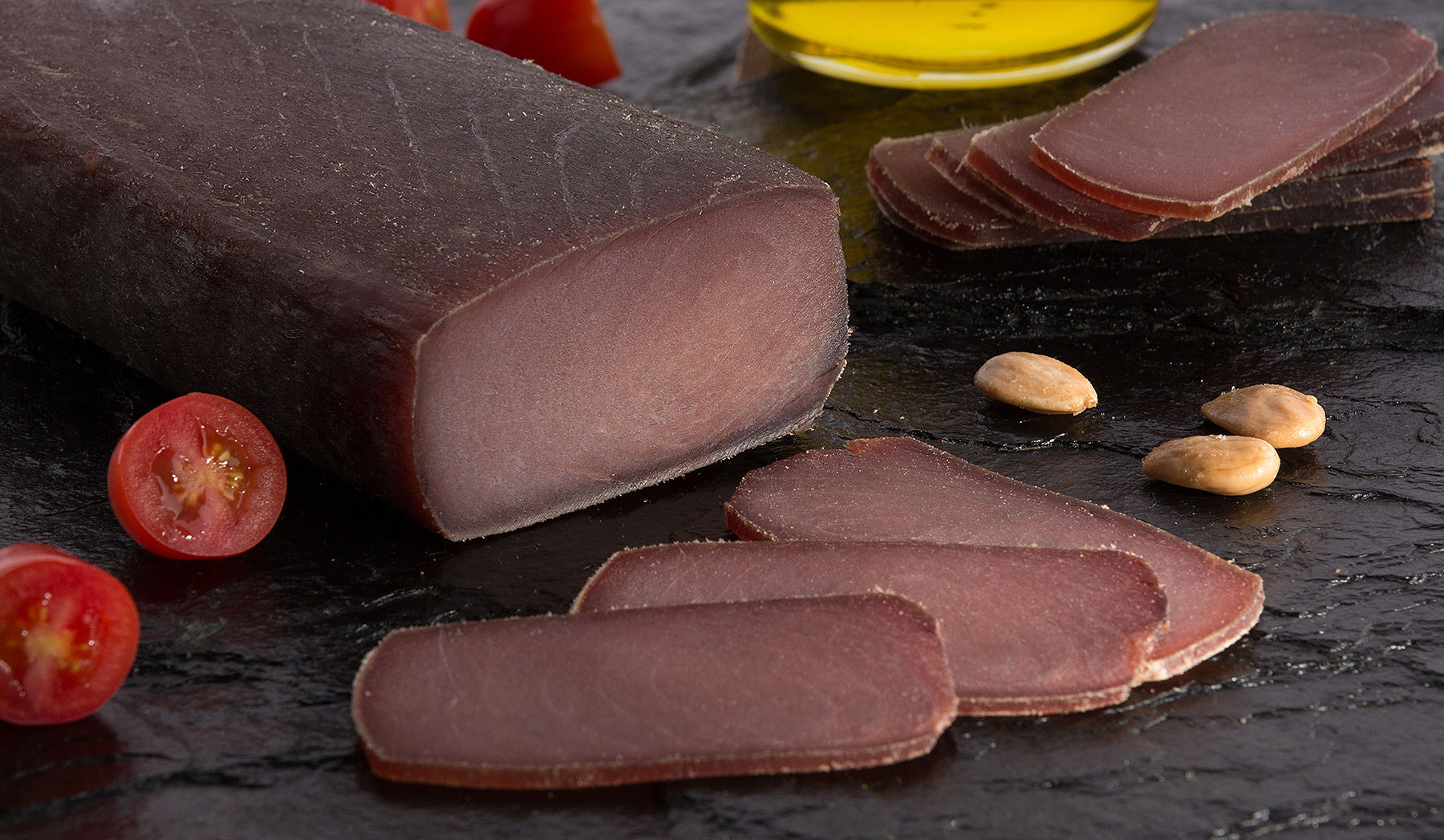
Turtle Soup & Amontillado: New Orleans, Louisiana is widely considered a food mecca. The city’s culinary scene is steeped in history and is as much a part of its allure as its music and festivals. It’s renowned for its distinct and influential cuisine that draws food enthusiasts from all over the world. Its status as a food destination comes from its ability to preserve its culinary traditions while also embracing innovation. The city’s dishes, from gumbo and jambalaya to beignets and po’ boys, are not only staples of Creole and Cajun traditions but are also part of the cultural fabric of the city. The rich culinary landscape includes high-end restaurants, historic eateries, and casual cafés, all serving dishes that are unique to the region. Moreover, New Orleans is home to a number of food festivals, including the famous New Orleans Wine & Food Experience, the French Quarter Festival, and the Poboy Fest, which celebrate the city’s rich gastronomic heritage.
In 2019, as a senior at Johnson & Wales University, Rhode Island, in the Sommelier program, Allie Nault distinguished herself by earning the Certified Sherry Wine Specialist (CSWS) certification with the Highest Honors. Her dedication to the wines of Jerez has made her an outstanding advocate ever since. That summer, Allie’s professional journey led her to Commander’s Palace in New Orleans. This landmark restaurant, with its rich history since 1893, has been an institution in the Garden District, famed for its elegant dining, and role as the training ground for prominent chefs. With a staff of over 250, including 9 Certified Sommeliers and more in training, the restaurant’s commitment to a robust beverage program is clear. Recognizing an opportunity to enrich their sherry offerings, Allie reached out for a seminar to revitalize their program and educate their team. Her initiative was met with enthusiasm, ‘It would truly be our honor to host you,’ she conveyed, anticipating a keen interest from numerous team members. The response, of course, was a resounding yes.
One of the restaurant’s signature dishes is their Turtle Soup au Sherry. This soup* is a quintessential example of New Orleans culinary tradition, blending local ingredients with French and Southern cooking techniques. The soup is made from a base of rich, slow-cooked turtle meat, which is stewed with a variety of vegetables, herbs, and spices. The meat of the turtle is known for its unique texture and flavor, which is both distinctive and robust. It’s often described as tasting somewhat like veal, in a variety of cuts, including the more gelatinous and the leaner pieces. What really sets Commander’s Palace’s turtle soup apart is the addition of sherry, which is typically added at the table. The sherry enhances the complexity of the soup’s flavor, adding a slightly savory and nutty taste that complements the richness of the turtle meat. The addition of sherry at the moment of serving not only enhances the flavor but also adds a touch of ceremony to the dining experience. Commander’s Palace is known for its commitment to high-quality, locally sourced ingredients, and its turtle soup is a dish that reflects both the creativity and the culinary heritage of New Orleans. This soup is often enjoyed as a starter and is emblematic of the restaurant’s storied history and its role in celebrating and preserving Creole ** cuisine. It’s a dish that encapsulates the unique blend of history, culture, and flavor that New Orleans is celebrated for. Make sure to have a slightly chilled bottle of Lustau Amontillado Los Arcos ready to be poured tableside!
*We understand that for various ethical, cultural, ecological, and personal reasons, eating turtle soup can be a troubling prospect for many people.
**Creole cuisine is a distinctive type of cooking originating in Louisiana, which blends a variety of influences from the various cultures that have historically contributed to the region’s identity. It primarily combines elements from French, Spanish, African, Native American, Caribbean, German, Italian, and Portuguese culinary traditions. Creole cuisine represents the multicultural history of New Orleans and Louisiana more broadly, a melting pot of flavors and techniques that has developed into a rich and unique culinary tradition.Top of Form
Bottom of Form
Rabbit Ears & Fino: elBulli was a Michelin 3-star restaurant near the town of Roses, Catalonia run by chef Ferran Adrià. The restaurant was known for its highly inventive and avant-garde cuisine, often considered the epitome of molecular gastronomy. There are numerous reasons why many consider elBulli to be the greatest restaurant ever; innovation, molecular gastronomy, exceptional experience, exclusivity, awards and recognition, legacy and influence, and educational approach, to name a few. elBulli closed as a restaurant in July 2011, with Adrià announcing that it would be transformed into a creativity center for chefs and artists. The legacy of elBulli endures, and its impact on contemporary cuisine is still felt globally, marking it as a turning point in the history of gastronomy. Indeed, elBulli was also famous for incorporating unconventional ingredients and creating dishes that were unusual and innovative. The restaurant was known for challenging diners’ preconceptions about food and providing an experience that was as surprising and thought-provoking as it was delicious. Ferran Adrià and his team often used ingredients and parts of animals that are not typically featured in most Western restaurants. The use of such items is part of a culinary philosophy that nothing should be wasted and that every part of an ingredient can be utilized in a way that is both creative and palate-pleasing. elBulli’s use of these extraordinary products contributed to its reputation as an establishment at the forefront of culinary innovation, where even the most unusual ingredients could become the stars of the menu.
elBulli’s “deep-fried rabbit ears with aromatic herbs”, for example, would be prepared in such a way as to transform them into a refined bonne bouche, altering their texture and flavor profile to create a unique snack that was crispy and enjoyable. But, once again, not everyone would agree with the very premise. As a Canadian blogger who experienced them firsthand puts it:
“There’s something about rabbit ears. Most of us have managed to distance ourselves from the brutality behind our meals. We’re so inured to the sight of a steak or a chicken breast, that we’ve become disconnected from the fact that an animal had to be killed and butchered to produce them. But rabbit ears go beyond even that. The problem is cuteness. A cow is not always cute. A crimson slab of meat certainly isn’t. But a pair of bunny ears is an altogether different story. Not only are rabbits cute, but their ears are an essential part of their cuteness, perhaps even its essence. Looking at steak calls to mind images of summer barbecues; looking at big, floppy rabbit ears conjures up happy childhood memories of Bugs Bunny or the Easter Bunny.”
At elBulli, ‘snacks’ were customarily recommended with a glass of cava or a biologically aged sherry. A glass of Lustau Fino Jarana , in particular, was an exceptional complement to the fried rabbit ears. The wine’s dry and bright profile, with almond and green apple notes, complemented the rich, savory flavor of the appetizer. The crispness of the sherry cut through the fattiness and crunchy texture of the fried snack, creating a balanced taste experience, and cleansing the palate between bites. The aromatic herbs and garlic used in seasoning the rabbit ears wonderfully matched the sherry’s own herbaceous and yeasty profile. The temperature contrast between the two elements enhanced the tasting experience, making it more dynamic. And let’s not forget that both fino sherry and rabbit are deeply rooted in Spanish cuisine. There is a long-standing tradition of pairing local wines with regional dishes, and the affinity between the two can often be attributed to their common geographic and cultural origins.
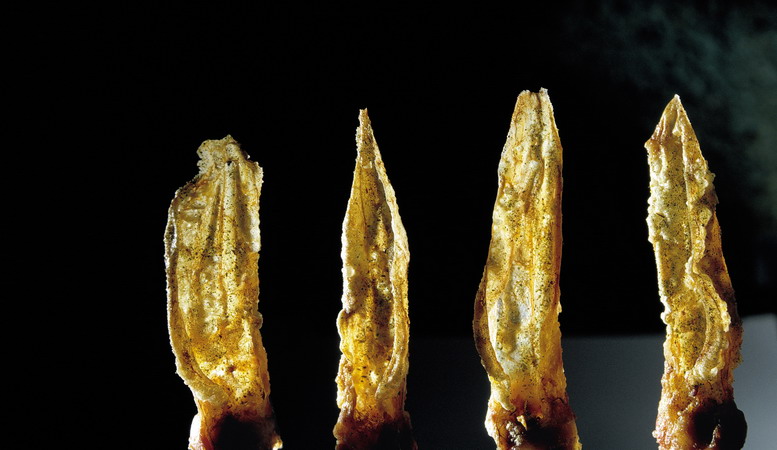
Manzanilla & Tomalley: “Tomalley” refers to the soft, green substance found in the body cavity of lobsters particularly associated with lobsters from Maine, given the state’s reputation for lobster fishing. Tomalley acts as a filter and a digestive gland, processing the lobster’s intake. In culinary contexts, tomalley is considered a treat. Tomalley is the most flavorful part of the lobster, with a similar profile to the lobster flesh but more intense often used to enrich sauces, stuffings, and soups, or simply eaten straight from the shell. For many, the mere idea of eating what is often mistaken for ‘lobster poop’ is enough to decline a taste of tomalley, colloquially known as ‘the green stuff.’ Tomalley, however, is not the lobster’s waste but its hepatopancreas, an organ functioning like a liver and pancreas. It is rich in concentrated flavor, which some gourmets value for its ability to capture the profound and complex essence of the sea, including the diet of the lobster itself. This intensity, combined with a distinctive briny quality, can indeed be too robust or unfamiliar for some palates. Furthermore, the texture of tomalley is unique, often described as a paste-like consistency that differs greatly from the familiar firmness of lobster meat. For individuals with sensitivities to food textures, this can pose a significant culinary barrier, regardless of the tomalley’s reputation as a delicacy. Beyond taste and texture, there are health considerations. Authorities sometimes advise caution. They may recommend that certain groups — such as pregnant women, immunocompromised individuals, and young children — limit their intake, or that consumers avoid tomalley from lobsters caught in possibly polluted waters. In summary, while tomalley is a traditional and beloved part of the lobster experience for many, it’s understandable why others might shy away from it.
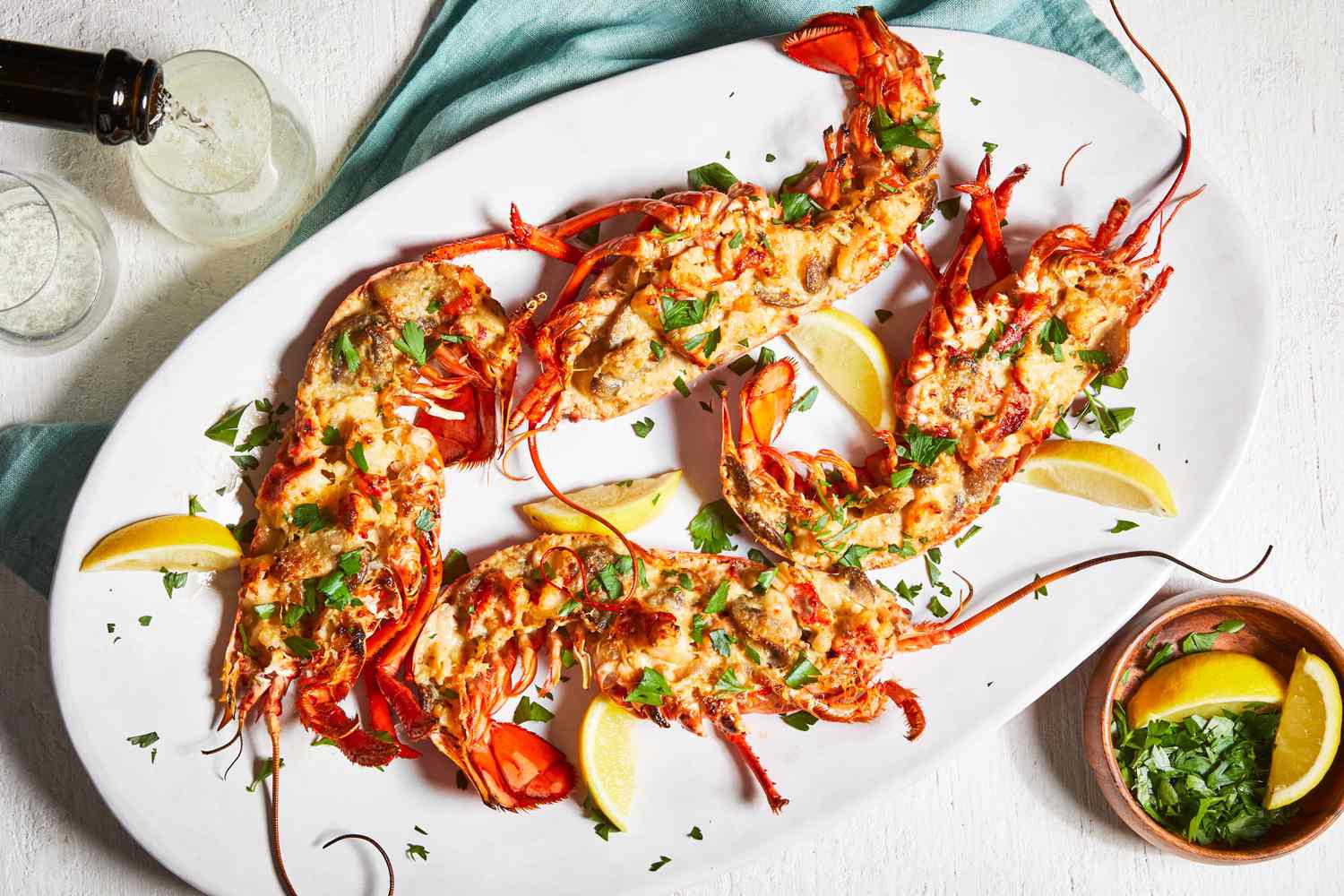
Bar Harbor, on Maine’s Mount Desert Island, is not only the gateway to Acadia National Park’s dramatic landscapes but also renowned for its breathtaking shores and deep-rooted maritime culture. Central to its economy and local identity, lobster fishing offers visitors hands-on boat tours to experience the traditional methods of lobster harvesting. The town’s unique combination of outdoor adventures, historical charm, and picturesque scenery secures its place as a prime New England destination, celebrated for its emblematic Maine lobster. Last summer, Lucas Payà, our Global Brand Educator based in Connecticut, embarked on a northern road trip with his family to explore the charming towns of Massachusetts, New Hampshire, and Maine. Their adventure reached its peak in Bar Harbor engaging in marine pursuits like lobster catching and savoring the delectable local fare. True to his passion, Payà brought along a wine trolley bag stocked with carefully chosen Lustau wines. Anticipating the fresh coastal flavors, he particularly packed manzanilla, a sherry whose dryness and salinity are a perfect match for seaside cuisine. (manzanilla sherry comes from Sanlúcar de Barrameda, where the cool, humid conditions near the sea are ideal for developing the flor yeast layer. This maritime influence gives Manzanilla a certain kinship with seafood). At a quaint Bar Harbor eatery, they delighted in the exceptional pairing of Maine lobster with the crispness of Lustau Manzanilla Papirusa. Payà still speaks enthusiastically about the sublime harmony between the wine and the rich flavor of the lobster tomalley, describing it as a culinary highlight of their trip. Here are his remarks:
“The wine’s briny mouthfeel dances perfectly with the deep-sea essence of lobster tomalley. Its luxurious and intense taste is tenderly cradled, not overpowered, by the sherry’s elegant embrace, elevating the tomalley’s distinct notes to new heights. Each sip of Manzanilla is like a crisp wave, breaking on the palate to refresh and enliven, slicing through the tomalley’s rich creaminess with a harmonious cleanse. And just when you think the duet couldn’t get any more sublime, the sherry’s aromatic undertones join in, adding layers of complexity that make this pairing nothing short of extraordinary.”







